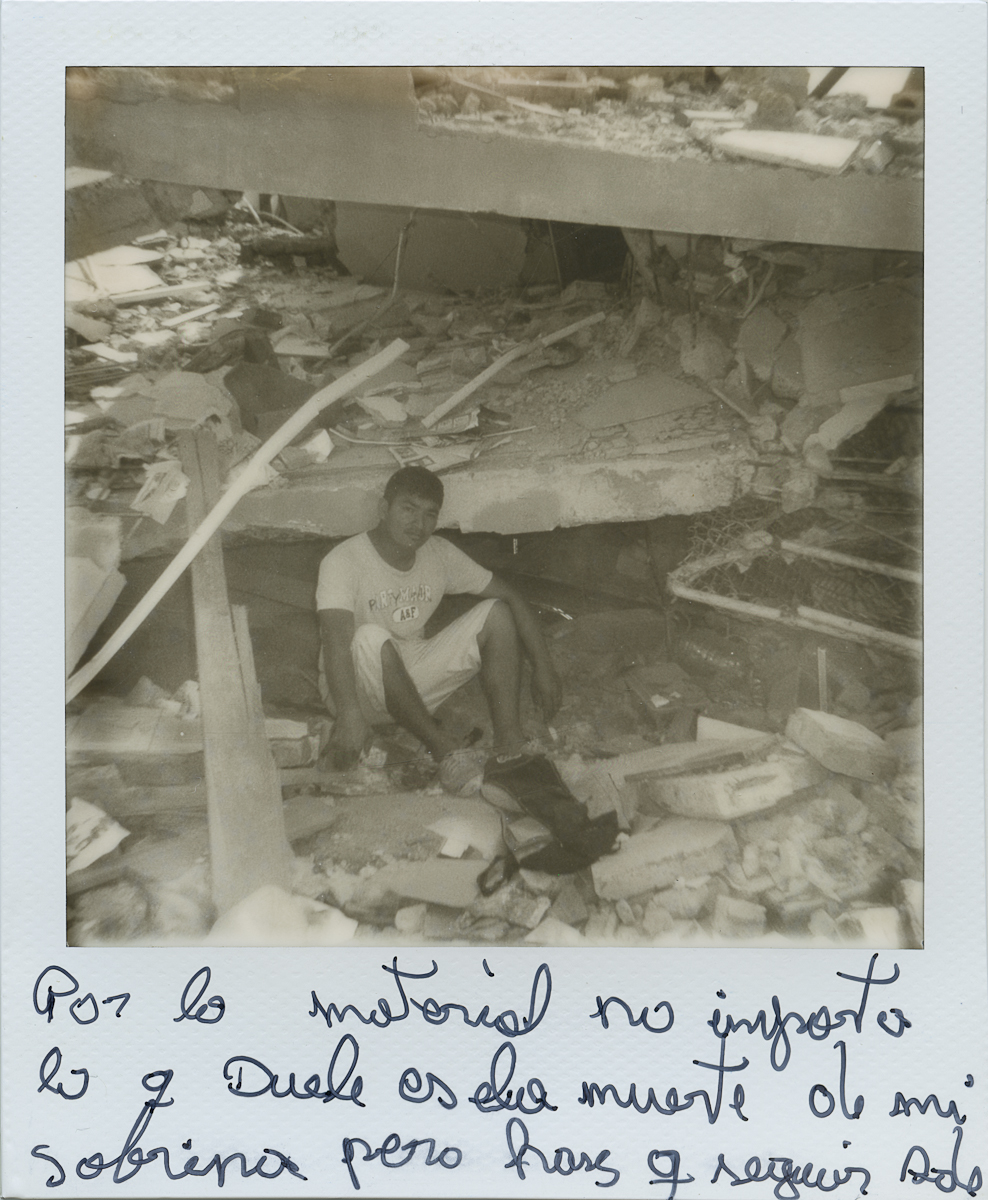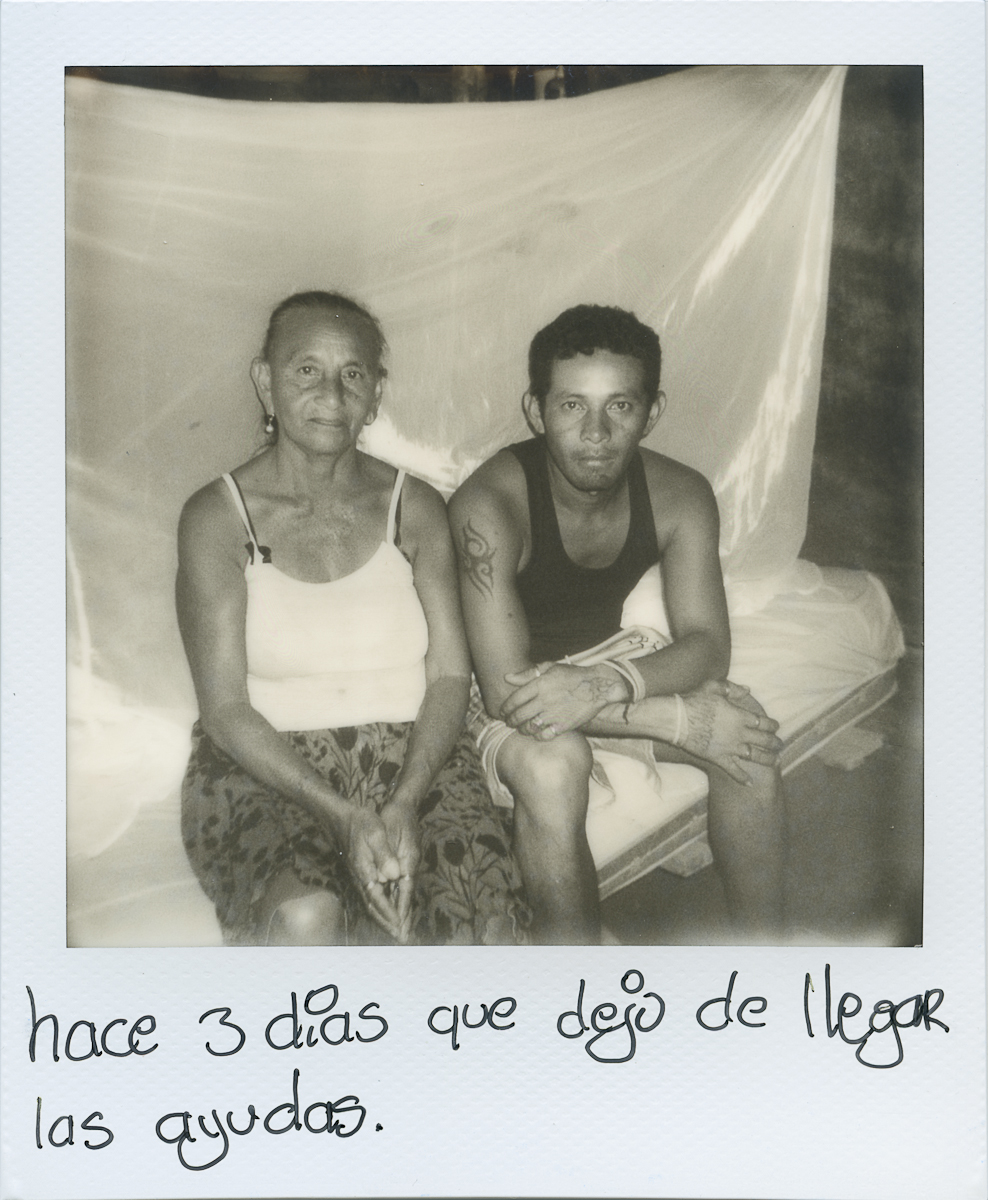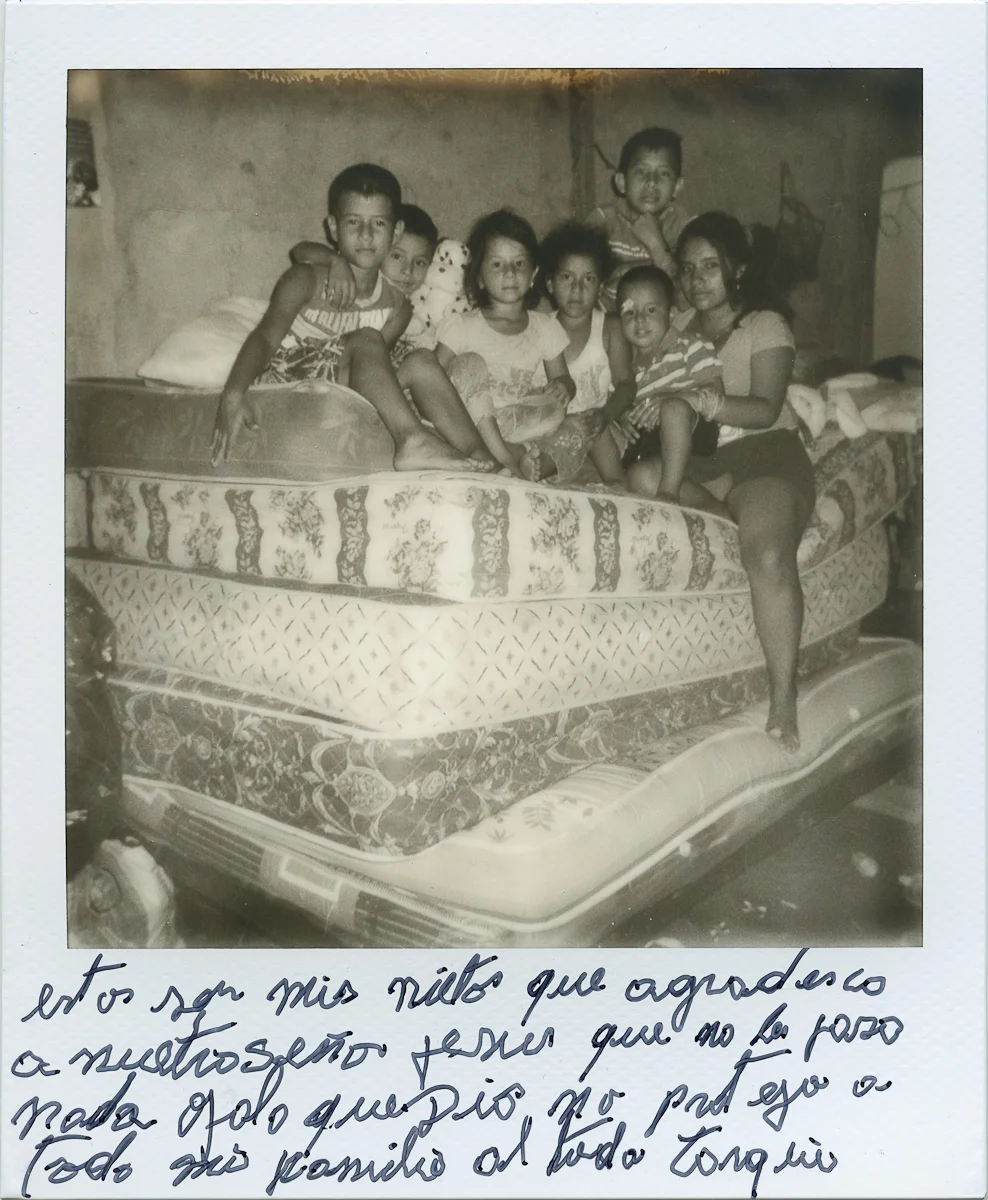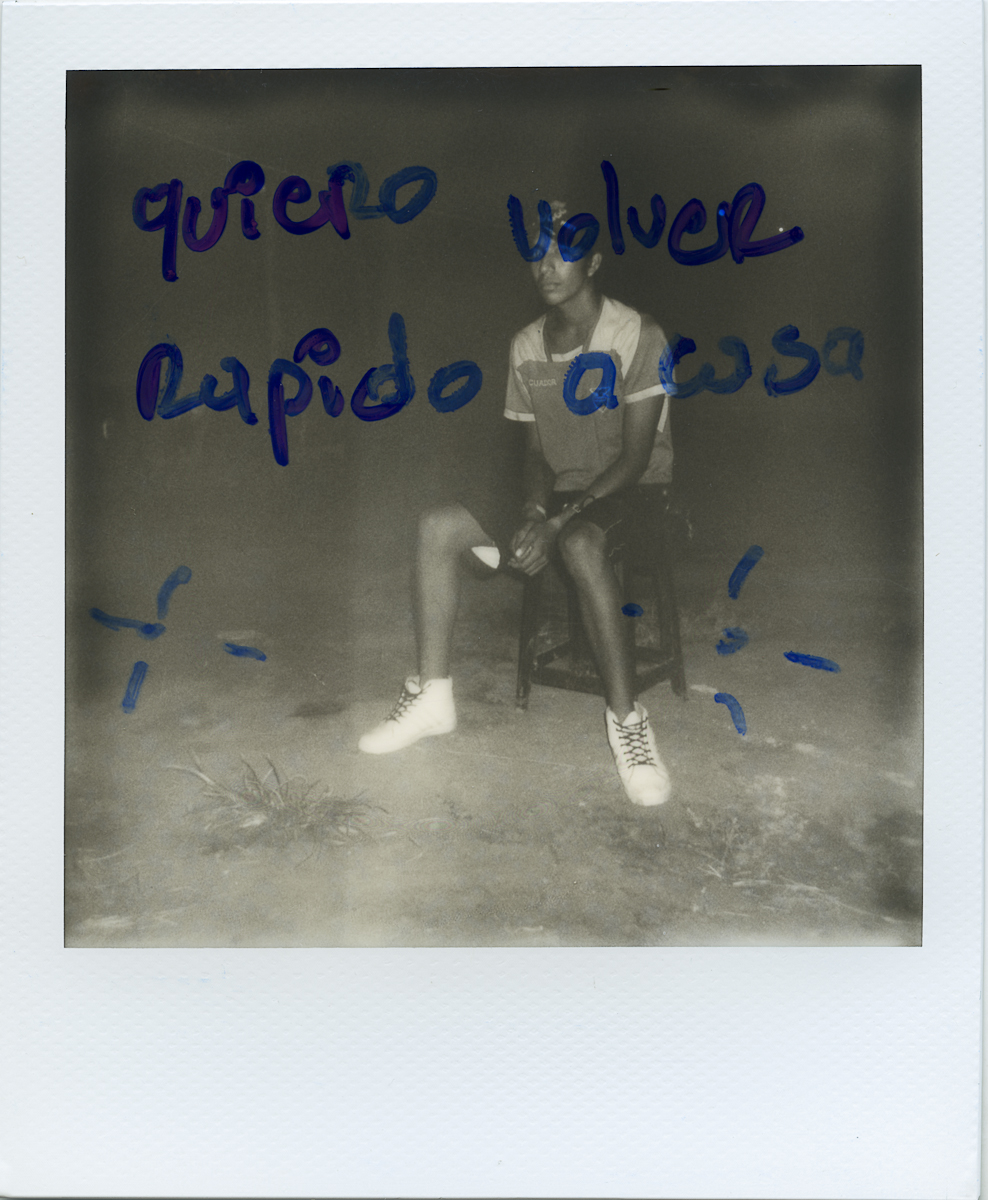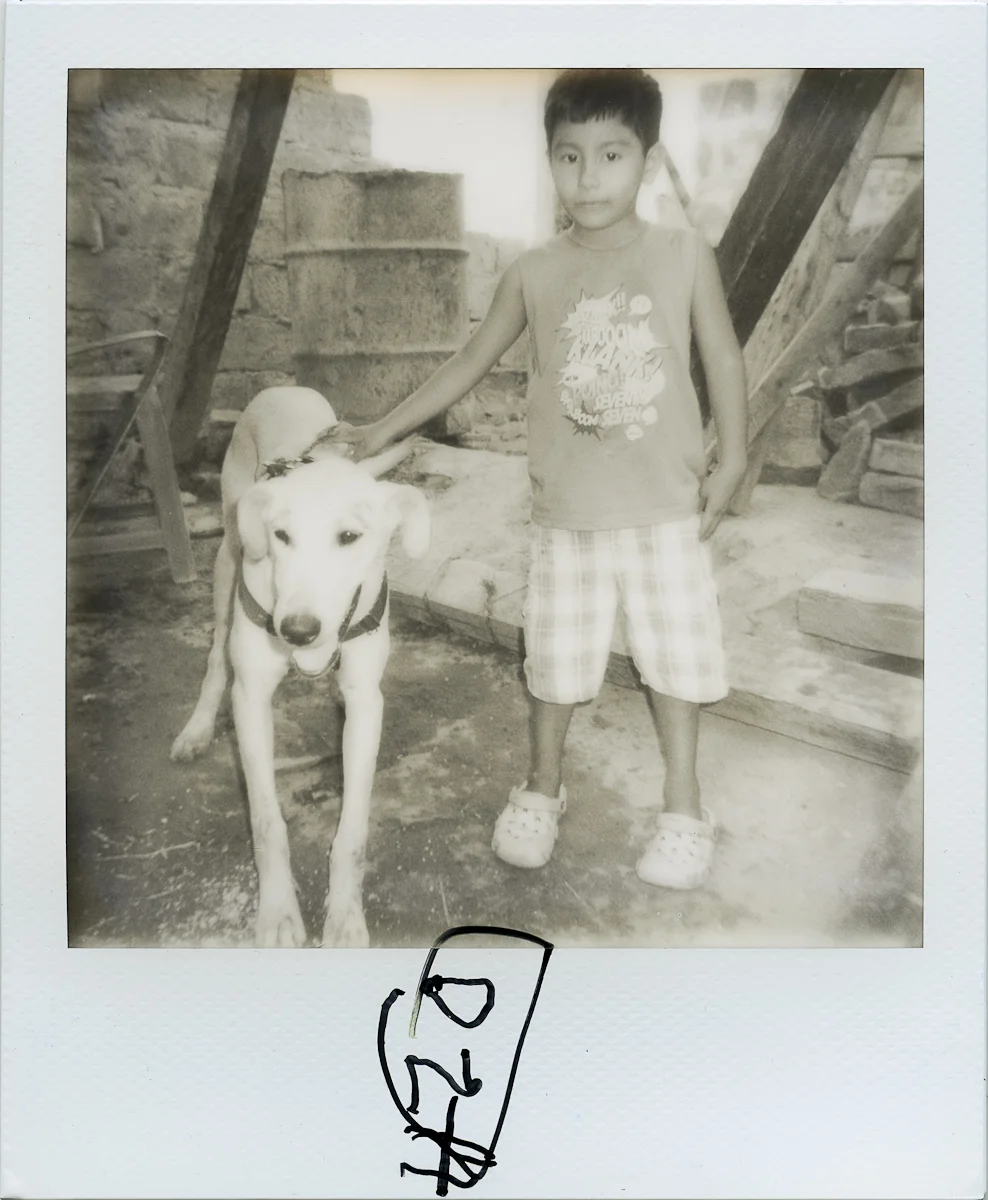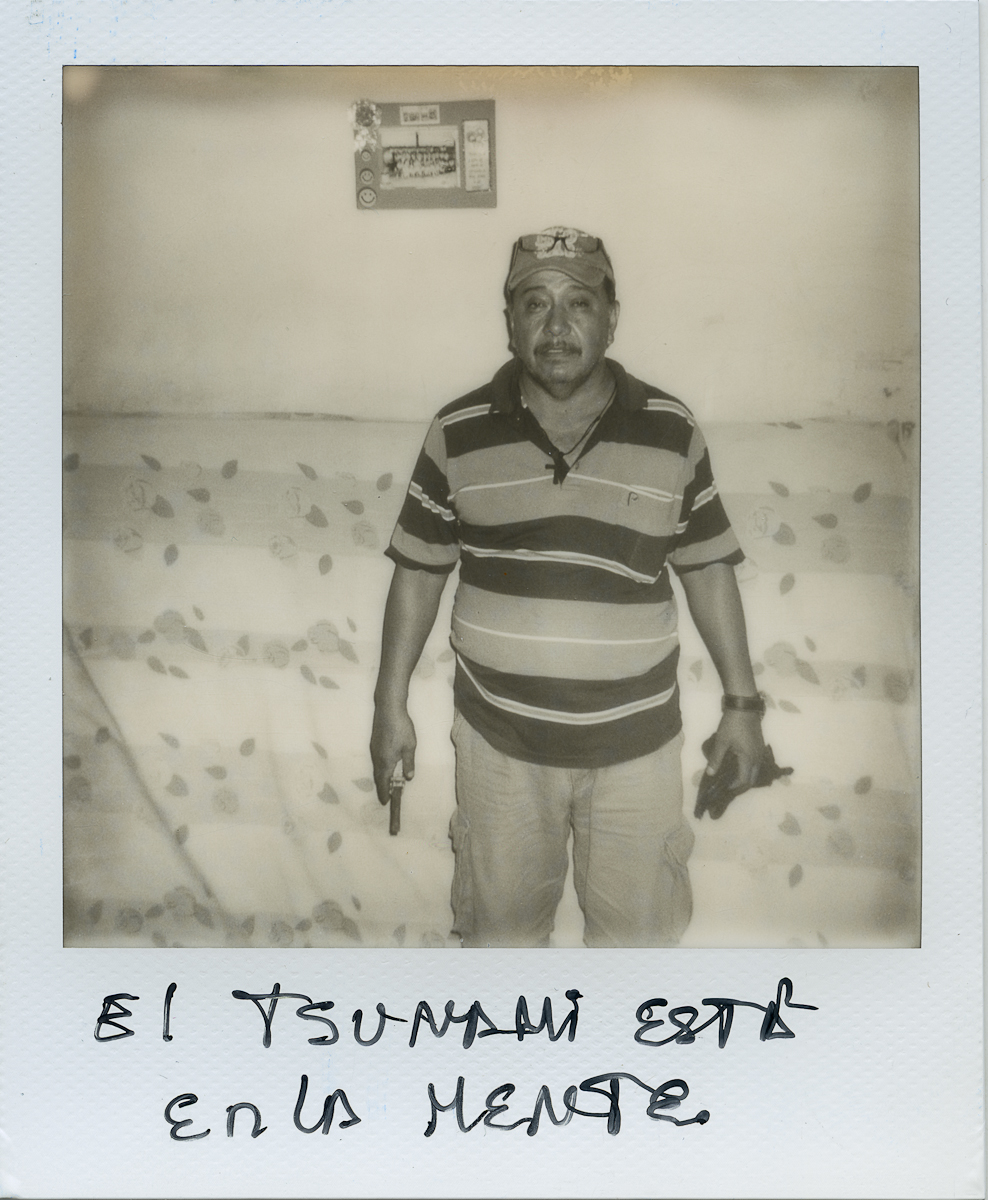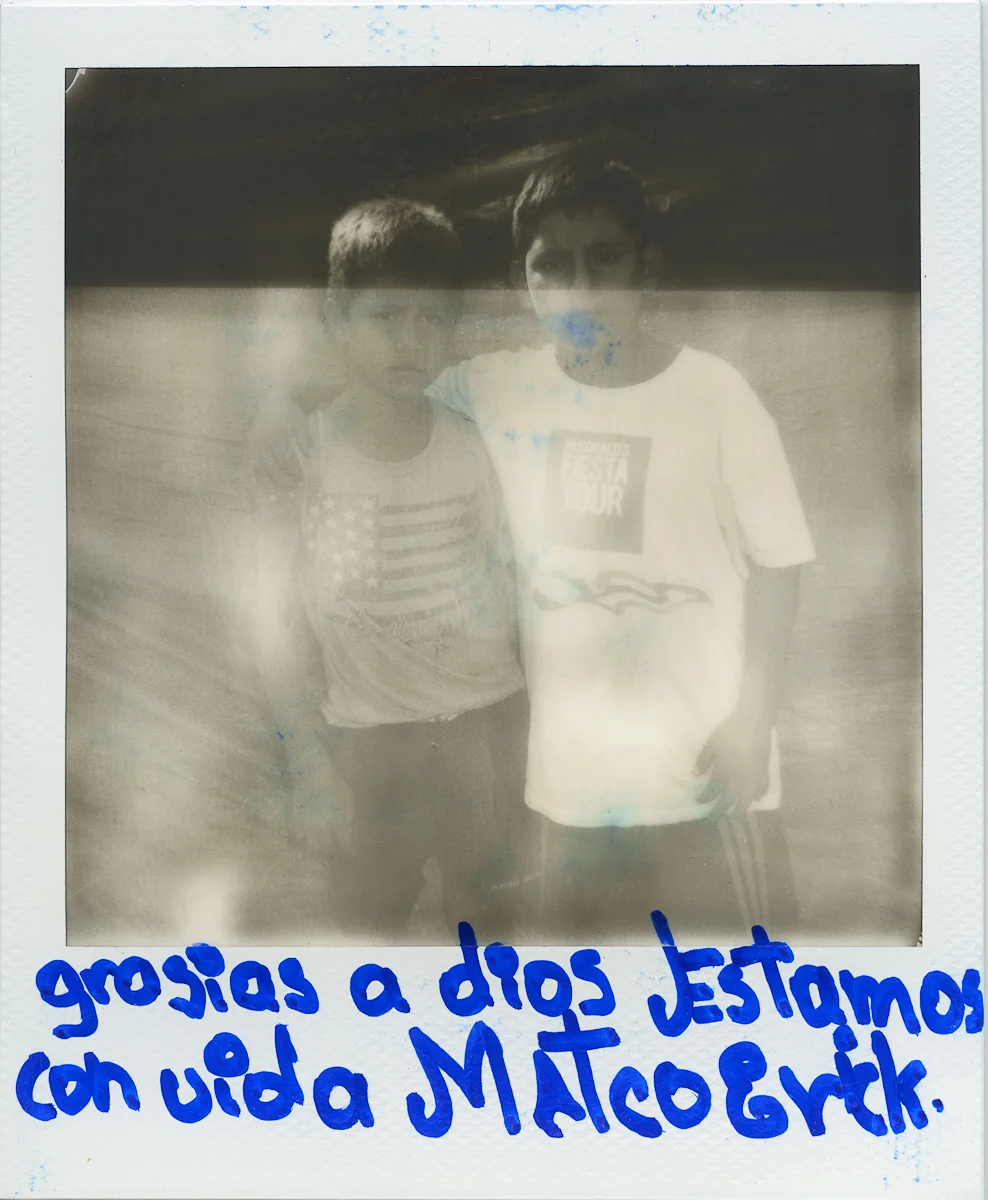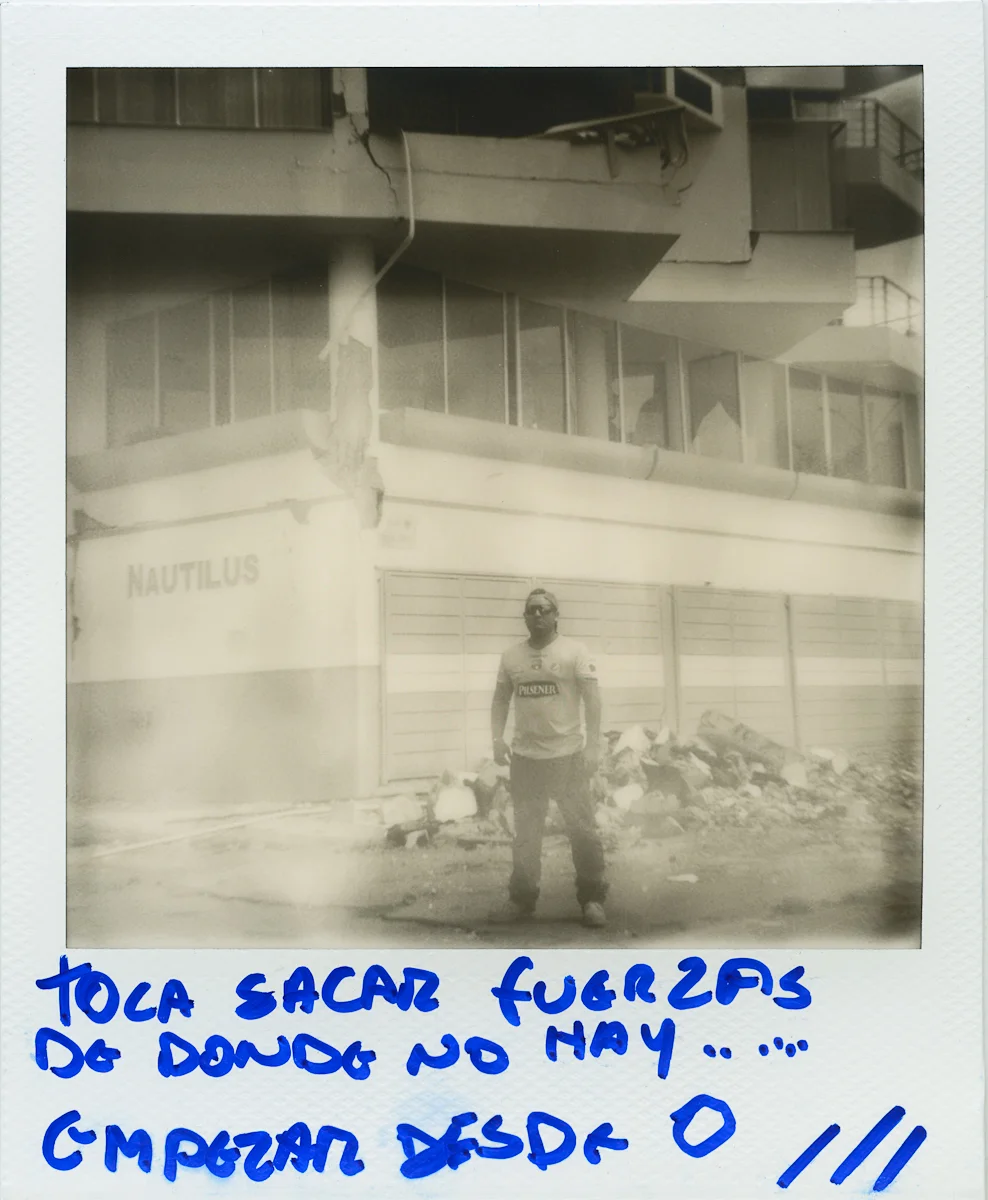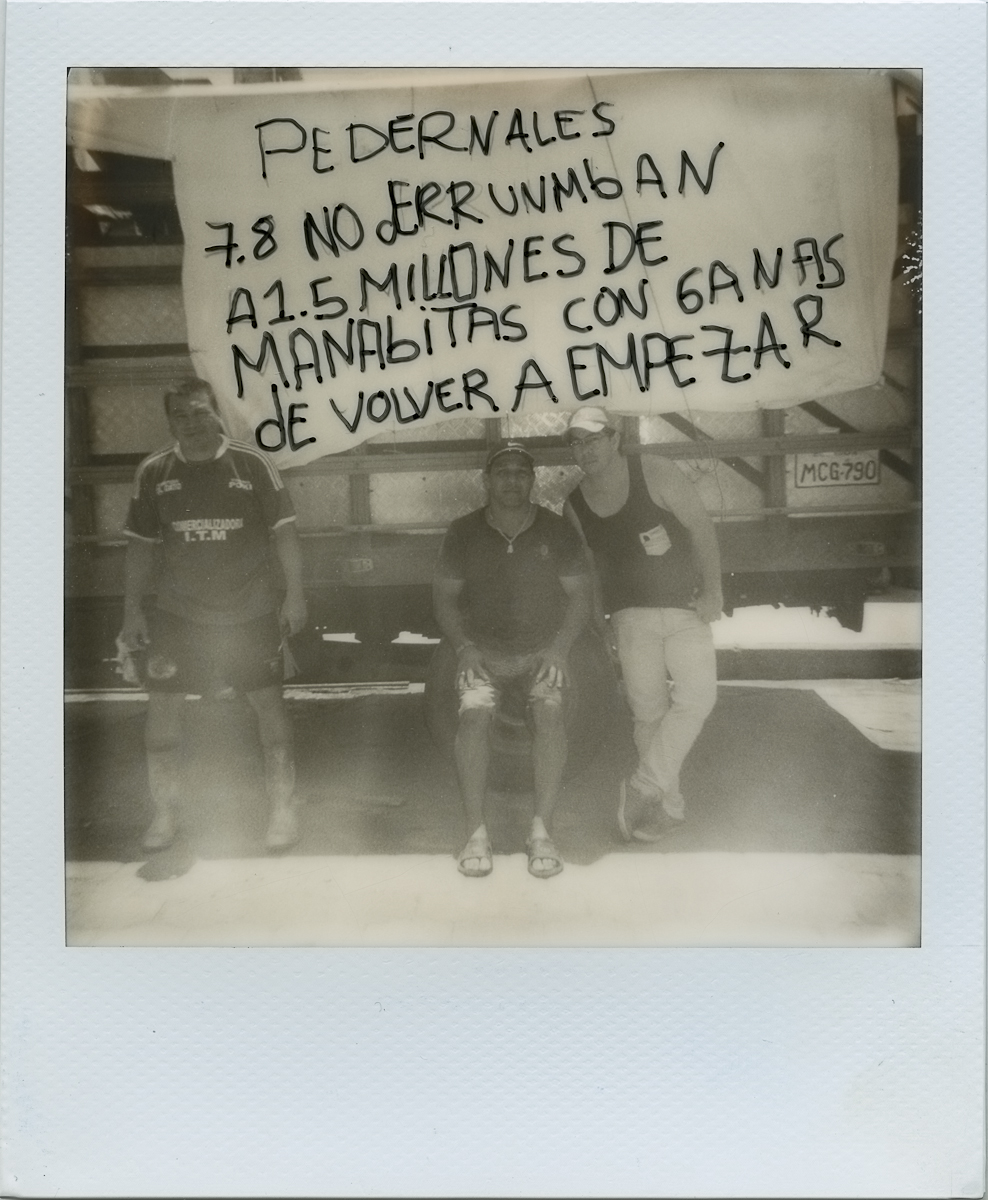[Hover the cursor on the image to see the testimony’s translation]
What to say when you have lost everything? When you lost a member of your family, a neighbour or a friend? What to say when the future is uncertain and the present precarious? The need to talk, however, is imperative. To tell how they lived and live this tragedy, how they felt it then and feel it now, what was lost and what hurts. The need to tell their desires, needs and hopes. To tell it with their presence, their words and their footprints, which are gradually being erased, as the debris is cleared and the assistance, wanes.
This project began one week after the 7.8 degrees Richter scale earthquake hit the Ecuadorian coast. Based on the premise of psychological emergency, the photographs were taken during a listening and empathic containment process. The pictures are portraits in a fleeting instant, as brief as the moment when these people’s close and familiar world came to a hold. Then the catharsis: to describe what they feel, think or desire.
The photographs were taken in the province of Manabí, in six of the most affected cities by the earthquake. People of San Vicente, Canoa, Bahía, Portoviejo, Manta and Pedernales tell their stories. They do it from the temporary shelters where they now live, from the rubble of their former homes or from tents outside their houses where they sleep in fear of new tremors. They tell them also from the still standing, broken and empty structures that they visit daily, waiting for the technical evaluation that will confirm that their houses can be repaired or should be demolished.
How to continue when everything or almost everything is lost? With the temperance of these people, who are much more than a number in a statistic and with the strength of helping hands that will still be needed for a long time during the reconstruction.
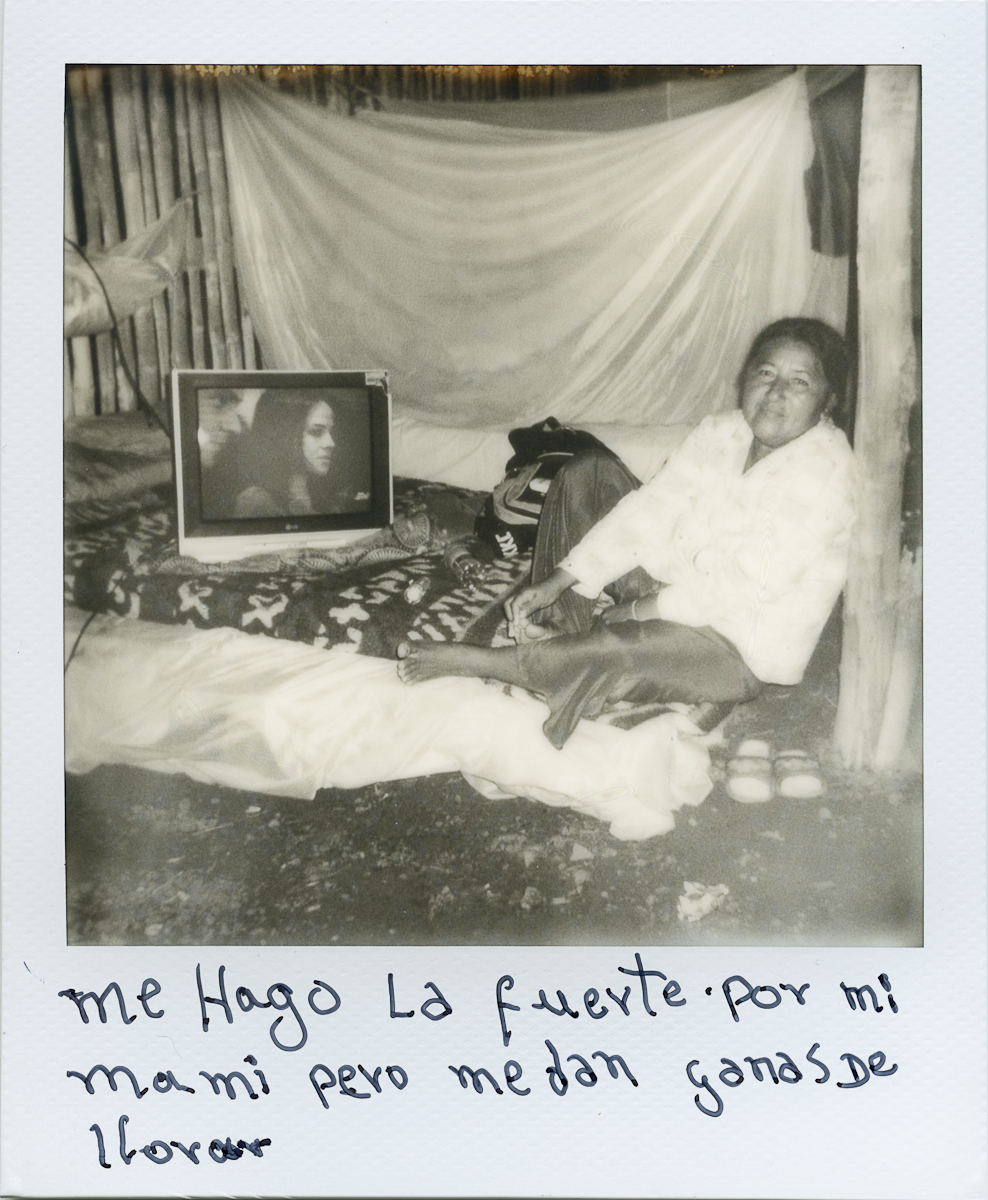
![[Maria did not know how to write but she decided to leave her fingerprint]](https://images.squarespace-cdn.com/content/v1/59e826e69f8dce26a33eaadb/1508461884665-O2MCQ7KXTNU5UXZM2TC8/Pun%CC%83o_y_Letra009.JPG)
